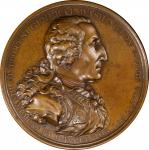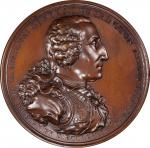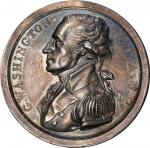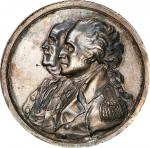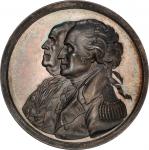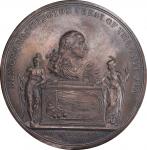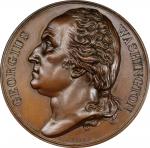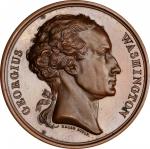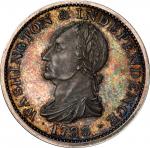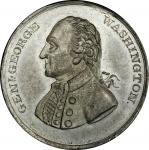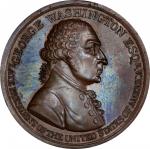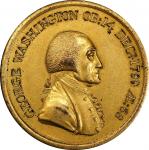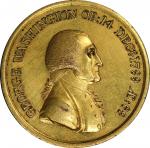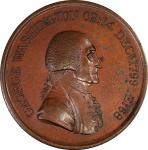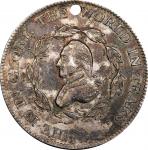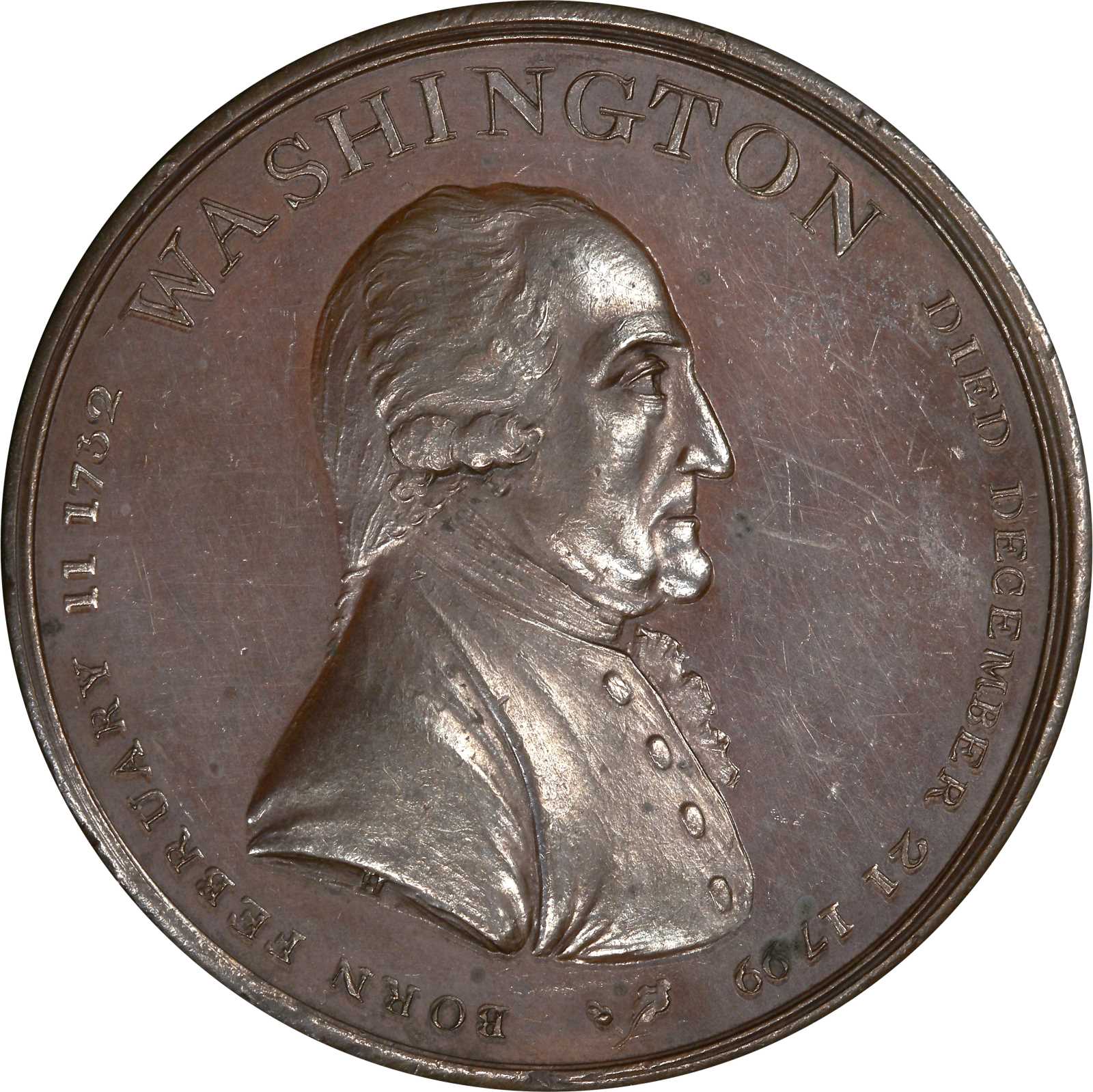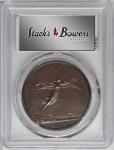1803 Washington Fame medal. Musante GW-87, Baker-84. Copper, Bronzed. SP-62 (PCGS).38.5 mm. 448.3 grains. Pale mahogany bronze surfaces with an area of faint tan through the lower reverse. Both sides are accented by nuances of pale lavender and blue. Deeply reflective in the fields with crisp detail through the devices. A bit handled, with scattered small marks and hairlines, but the elegantly sparse design does little to protect the broad and fragile fields, so this is not unusual for this medal. A shallow edge nick is noted just left of the base of the truncation. Evidence of very slightly shifted double striking is seen on both sides.<p>The Fame medal is widely considered to be the most beautifully styled of the memorial medals. It has long been prized by serious collectors of Washington medals, an area of study that enjoyed strong enthusiasm in the years leading up to the Civil War. This was also the same time that American numismatics was growing in popularity. In the 1862 David McGilvray sale of coin dealer Henry Cook’s property, a Fame medal was described as “the first offered at public sale in this country” and realized $37.50. Two years later, the John McCoy specimen sold to J.N.T. Levick for $85, a substantial sum late in the War. In 1882, this one was deemed worthy of valuable space on the Bushnell catalog plate.<p>The Fame medal is one of a large number of classic Washington pieces produced in England for sale both into European and American cabinets. While it has been proposed by Russell Rulau, George Fuld and, most recently, Neil Musante, to be the work of engraver John Henning (who produced the 1834 American Eagle medals), stylistic comparison reveals the proper attribution to be the hand of John Gregory Hancock. Other medals by Hancock that share this style include such pieces as the Robert Banks Secretary of State medal of 1803 (BHM-548) and the 1806 Death of William Pitt medal (BHM-613). The stylistic match is unmistakable and the time period of production is identical.<P>Hancock typically signed his medals with his name, a far less ambiguous style than the simple “H” seen on Washington’s truncation on the Fame medal. This detail alone has unsurprisingly raised questions as to the maker. However, this might be easily explained by considering the position of a skilled engraver who might have hoped to sell his talents to the English Crown, or other patrons who might have maintained a sore spot for those who defied them in the American Revolution. It is easy to imagine that a medal celebrating George Washington may not have played well to some in 1803.<p>The reverse of this medal was used a second time, circa 1813, paired with a simple design of a wreath around the inscription ORANGE BOVEN. It is cataloged in British Historical Medals (#773), without attribution to a maker. This work, struck in white metal, seems to be quite rare as we have only seen one or two.Ex Charles I. Bushnell, S.H. and H. Chapman, June 1882, lot 1324; William Spohn Baker Collection, to the Historical Society of Pennsylvania by bequest, November 15, 1897.


